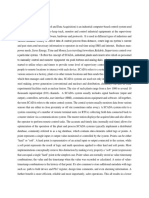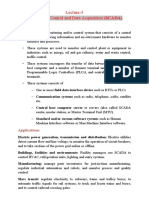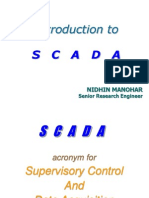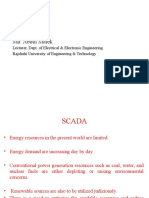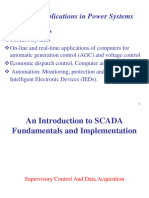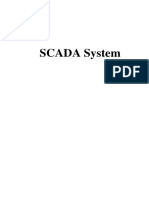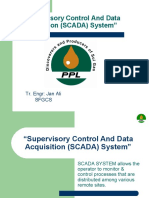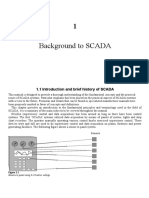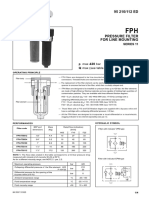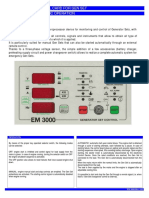0% found this document useful (0 votes)
32 views28 pagesTopic 2c-SCADA Systems
The lecture notes cover the architecture and functionalities of Supervisory Control and Data Acquisition (SCADA) systems, which are essential in industrial control systems for monitoring and controlling field components. Key components include Remote Terminal Units (RTUs), Intelligent Electronic Devices (IEDs), and a communication system that connects these to a central control center. The document also discusses various communication technologies, system displays, and the importance of data historians in managing operational data.
Uploaded by
taqdees.234Copyright
© © All Rights Reserved
We take content rights seriously. If you suspect this is your content, claim it here.
Available Formats
Download as PDF, TXT or read online on Scribd
0% found this document useful (0 votes)
32 views28 pagesTopic 2c-SCADA Systems
The lecture notes cover the architecture and functionalities of Supervisory Control and Data Acquisition (SCADA) systems, which are essential in industrial control systems for monitoring and controlling field components. Key components include Remote Terminal Units (RTUs), Intelligent Electronic Devices (IEDs), and a communication system that connects these to a central control center. The document also discusses various communication technologies, system displays, and the importance of data historians in managing operational data.
Uploaded by
taqdees.234Copyright
© © All Rights Reserved
We take content rights seriously. If you suspect this is your content, claim it here.
Available Formats
Download as PDF, TXT or read online on Scribd
/ 28














